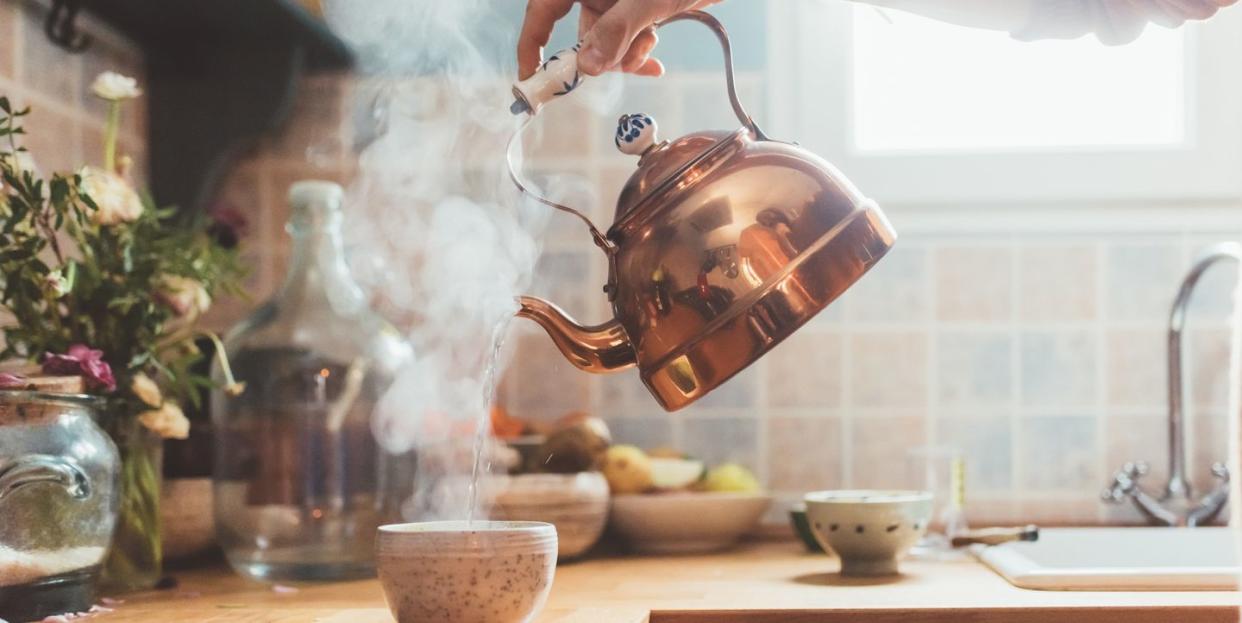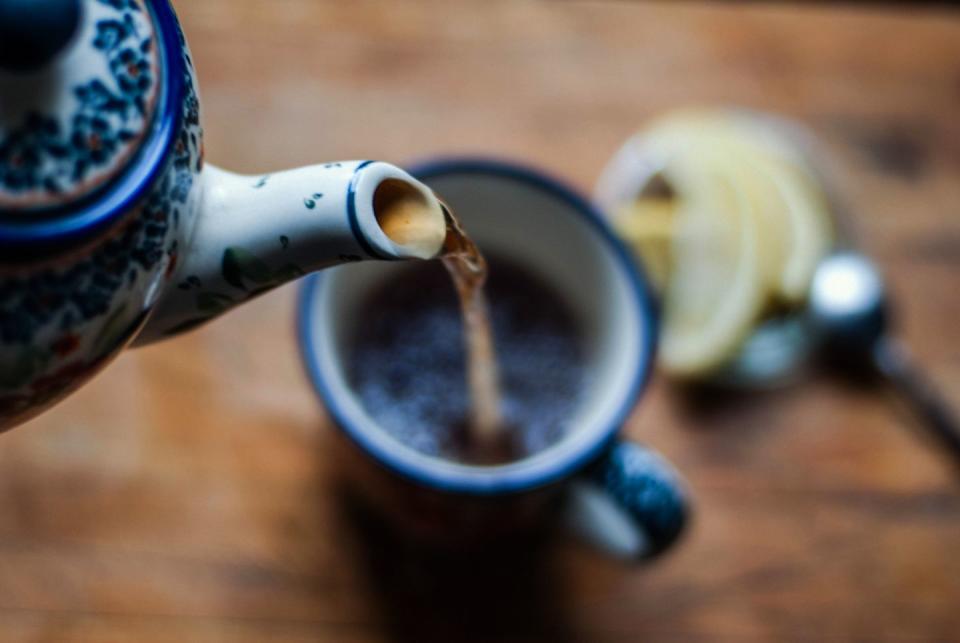How to descale a kettle using natural products

Have you ever gone to take a sip of your treasured morning cuppa and experienced an unpleasant hard lump hitting your lip? That will be the limescale.
Us Brits love our tea, drinking around 100 million cups a day across the nation, according to tea.co.uk.
We have some high standards about how we like to take our tea –- and with a spoonful of limescale is not one of them. So it's always good to know how to descale a kettle so you can make the perfect cuppa every time.

What is limescale?
Limescale is a hard, chalky mineral deposit of calcium carbonate that builds up inside kettles when hot water evaporates and solidifies.
Why do we need to remove limescale?
Not only is it extremely unpleasant to find hard lumps of limescale floating in your tea, it's important to keep your kettle free of limescale as it can slow down the heating process.
Limescale builds up in layers around heating elements so more energy is required when heating water. The result is a reduction in efficiency and an increase in running costs.
It's particularly important to descale your kettle around once every three months in hard water areas.
How to descale your kettle naturally
Descaling a kettle with vinegar:
"An easy way to descale your kettle is to reach for a couple of household products. Limescale can be dissolved easily with a mild acid," says Dean Davies, cleaning supervisor at Fantastic Services. "The most commonly used product is white vinegar because you can find it in almost every home."
Try filling your kettle with a mixture of one part white vinegar and one part water, totalling around 500ml.
Bring the vinegar solution to the boil then, once it has finished boiling, leave it to sit for around an hour. For even better results, leave it overnight – although you may not want to go that long without a cuppa.
After an hour or so has passed, pour out the solution and take a clean, damp cloth or long-handled cleaning brush and wipe away any leftover limescale build-up. If there are any stubborn bits, add a bit of baking soda to a damp sponge to remove.
Next, you want get rid of the vinegar smell, so fill up the kettle with water and boil. Pour this water away and repeat the process until the vinegar aroma has gone.
Dean says: "If you are dealing with a more heavy build-up you can repeat the process with a greater ratio of vinegar in the solution and leave it in the kettle overnight before boiling it."

Descaling a kettle with lemon juice:
"If you don’t have vinegar or you prefer not to use it, you can try mixing 1oz (30ml) of lemon juice with 18 oz (500ml) water,' says Dean. 'Leave the mixture in the kettle for an hour and then boil. Next, pour away, rinse and boil again with clean water."
Descaling your kettle with Coke:
Besides people’s best-loved soft drink, did you know that Coke works wonders with limescale build-ups from a kettle?
Dean says: "Have some left-over Coca Cola in the fridge? Make us of it by pouring half a litre of the fizzy drink in the device. Let it work for half an hour and rinse thoroughly. Remember: the result depends on how badly the limescale has affected the inside of the appliance. And never, ever boil Coca Cola in your kettle - the soft drink contains copious amounts of sugar which, once the water evaporates, might stick on the vessel's walls."
Cleaning limescale with pickle-water
"Another DIY remedy to overcome limescale is pickle-water," explains Dean. "The citric acid found in the marinate easily breaks down limescale deposits, leaving you with a squeaky-clean and ready-to-use kettle. The scheme is as simple: boil the device full of pickle-water and set aside to cool down. Finally, rinse thoroughly."
How to descale a kettle: What to buy
Of course, if you don't want to descale a kettle with your own concoction, there are excellent products you can buy for the job.
The Oust All-Purpose Descaler is a brilliant option. It comes in easy-to-use sachets and a guide on how to apply it. You simply fill up your kettle halfway and boil, then move the kettle to the sink and add your Oust sachet. After a quick 10 minutes, pour the solution away and rinse the kettle. Then fill it with plain water and boil. Rinse and do another boil to make sure the solution is all gone.
Top tips for reducing limescale in your kettle
Finally, Dean has some handy tips to prevent too much limescale build-up in the future.
1.Don’t boil too much water
"People tend to overfill the kettle with more water than they need, which they leave in the kettle after use," says Dean. "This is not a good practice and can lead to even faster accumulation of limescale. Try to boil as much water as you will need."
2. Use a limescale catcher
To slow down the build-up you can also use a limescale catcher. The Conran Shop has a good option.
3. Clean your electric kettle
Dean advises: "Clean your kettle at least once a week from the outside and descale the inside about once a month or every two months, depending on your frequency of use."
Like this article? Sign up to our newsletter to get more articles like this delivered straight to your inbox.
You Might Also Like


